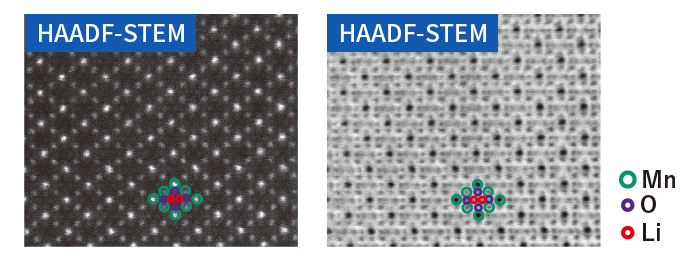Disassembly Investigation of Batteries and Capacitors,
Investigation for Deterioration and Defect,and Structural Analysis
Analysis of the Positive Electrode
JFE-TEC supports your product development for a higher power or higher capacity of the positive electrode by using methods for analyzing the crystal orientation distribution based on electron back scattering diffraction (EBSD) analysis, or electron energy loss spectrum (EELS) local mapping using an aberration-corrected scanning transmission electron microscope (Cs-STEM), or other various element analysis/structural analysis methods.
Use of an aberration-corrected scanning transmission electron microscope enables us to obtain useful structural information in the course of positive electrode material development.
The following are examples of observation of LiMn2O4which is widely used for positive electrodes.
Microstructure of the LiMn2O4 Positive Electrode
Since the aberration-corrected scanning transmission electron microscope is capable of performing atomic-level observation, structural change of the surface layer of positive electrode active material can also be examined through observation of HAADF (High Angle Dark Field) images or ABF (Annular Bright Field) images.

Status Assessment of a Micro Region of the LiMn2O4 Positive Electrode
Through EELS analysis, which is incidental to the aberration-corrected scanning transmission electron microscope, it is found that the valence of Mn differs between the circumference and the inside of the active material.



